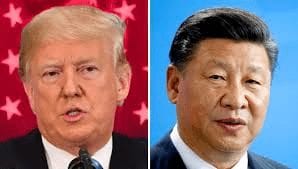Next, President Donald Trump Should Tackle America’s Overvalued Dollar – By Michael Stumo (lifezette.com) / Oct 27 2018
U.S. manufacturers, farmers and consumers suffer when currency imbalances favor overseas competitors and Wall Street financiers
President Trump’s decisive actions on trade with China are a long time in coming because U.S. manufacturers have struggled for years against heavily subsidized competition from China.
And whether it’s hefty industrial subsidies, currency undervaluation, intellectual property theft, or the dumping of steel and other products, it’s clear that China has stacked the deck against U.S. producers.
Thanks to Trump’s tariffs, however, U.S. manufacturing competitiveness is rising, and domestic factories are enjoying increased production and job growth. China’s President Xi Jinping (pictured above right) is right to be worried.
The overall goal of the tariffs is to put U.S. producers on a more even footing with their Chinese counterparts. It’s a wise plan, and it would be proceeding smoothly if not for one overarching problem: The U.S. dollar is now heavily overvalued in global markets. Until the president addresses this “strong dollar,” America’s manufacturers will continue to face an uphill battle.
Wall Street happens to love a strong dollar. A robust greenback helps to attract foreign investment, with global customers continually purchasing massive amounts of U.S. securities and financial assets.
But this incoming capital has a side effect — it keeps driving up demand for the dollar and raising its value. That’s fine for affluent American global travelers, since it provides them with extra purchasing power when shopping in Europe. But that same dollar strength is also punishing U.S. workers who provide goods, food or services.
Why is a strong dollar hurting U.S. farms and factories and benefiting other countries? Because it makes U.S. products more expensive overseas. It also artificially cheapens imports from Asia and the European Union.
Amid all the wrangling over his tariffs, Trump seems aware of the accompanying impacts of a strong dollar. He suggested as much recently, saying that a strong dollar “doesn’t necessarily mean all good.” Recent data make this extra clear, since the dollar has climbed roughly 7.15 percent on a trade-weighted basis since April alone.
As part of a smart “America First” agenda, Trump has prioritized strong trade action, including both tariffs and renegotiated trade agreements. But the dollar’s persistent rise is now hurting the effectiveness of these strategies.
A look at federal data helps to explain the problem. Total revenue from the president’s tariffs is estimated to be $42 billion in 2018. But if the dollar rises only 1 percent, its annual impact will exceed the tariffs’ revenues.
That’s because every 1 percent increase in the dollar’s value adds roughly $25 billion annually to the price tag of U.S. exports. And it effectively subsidizes import prices by about $31 billion as well. That’s a combined $56 billion penalty.
How high is the dollar flying right now? The Coalition for a Prosperous America (CPA) estimates the dollar is overvalued by as much as 25 percent. That’s a significant challenge for Boeing, Caterpillar, Ford, and the nation’s farmers — since it makes their exports 25 percent more expensive for overseas consumers. Worse, it makes imports from Kia, Toyota, and Samsung 25 percent cheaper in the U.S. market — a heavy price differential for domestic producers to overcome.
America’s massive goods trade deficit clocked a stunning $800 billion last year, and it’s understandable that Trump is imposing tariffs to halt the hemorrhaging of U.S. industry. But with the dollar significantly overvalued, he needs to adopt a wider approach.
Under existing international agreements, U.S. presidents retain authority to respond to economic threats that originate outside the United States. Noting the latitude this provides, Trump should start imposing a fee on excessive foreign capital flooding into U.S. investment markets.
Like a peak-usage fee on electricity consumption, this could slow the impacts of foreign capital and gradually push the dollar back to its fair market value. That would give U.S. exporters a chance to become more competitive globally.
President Ronald Reagan demonstrated the efficacy of such intervention in 1985, when he devalued the dollar through the Plaza Accord. Fast-growing economies like China already task their central banks with similarly managing exchange rates. And countries such as Japan and Switzerland also manage exchange rates to benefit their manufacturers and exporters.
America’s workers and farmers are clearly paying the cost of a strong dollar. Of course, Wall Street remains perennially supportive of a strong dollar. But the U.S. has lost 5 million manufacturing jobs over the past two decades. And when much of the nation’s middle class is getting squeezed, something has to give.
It’s time for Trump to expand his trade strategy to include a competitively priced dollar. Unless action is taken, his tariffs will have limited effectiveness. And that will hamper efforts to reduce America’s trade deficit and rebuild domestic manufacturing.




















